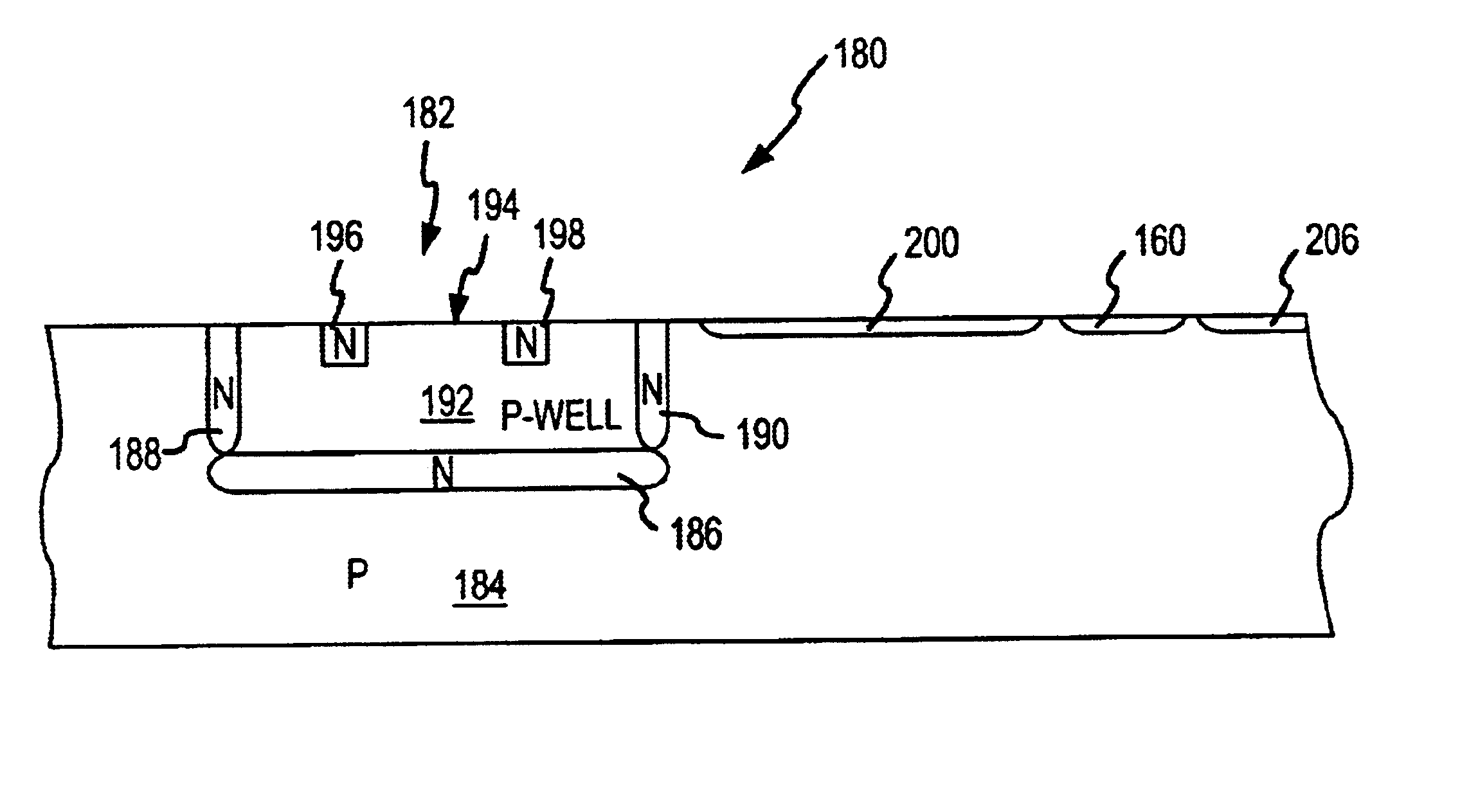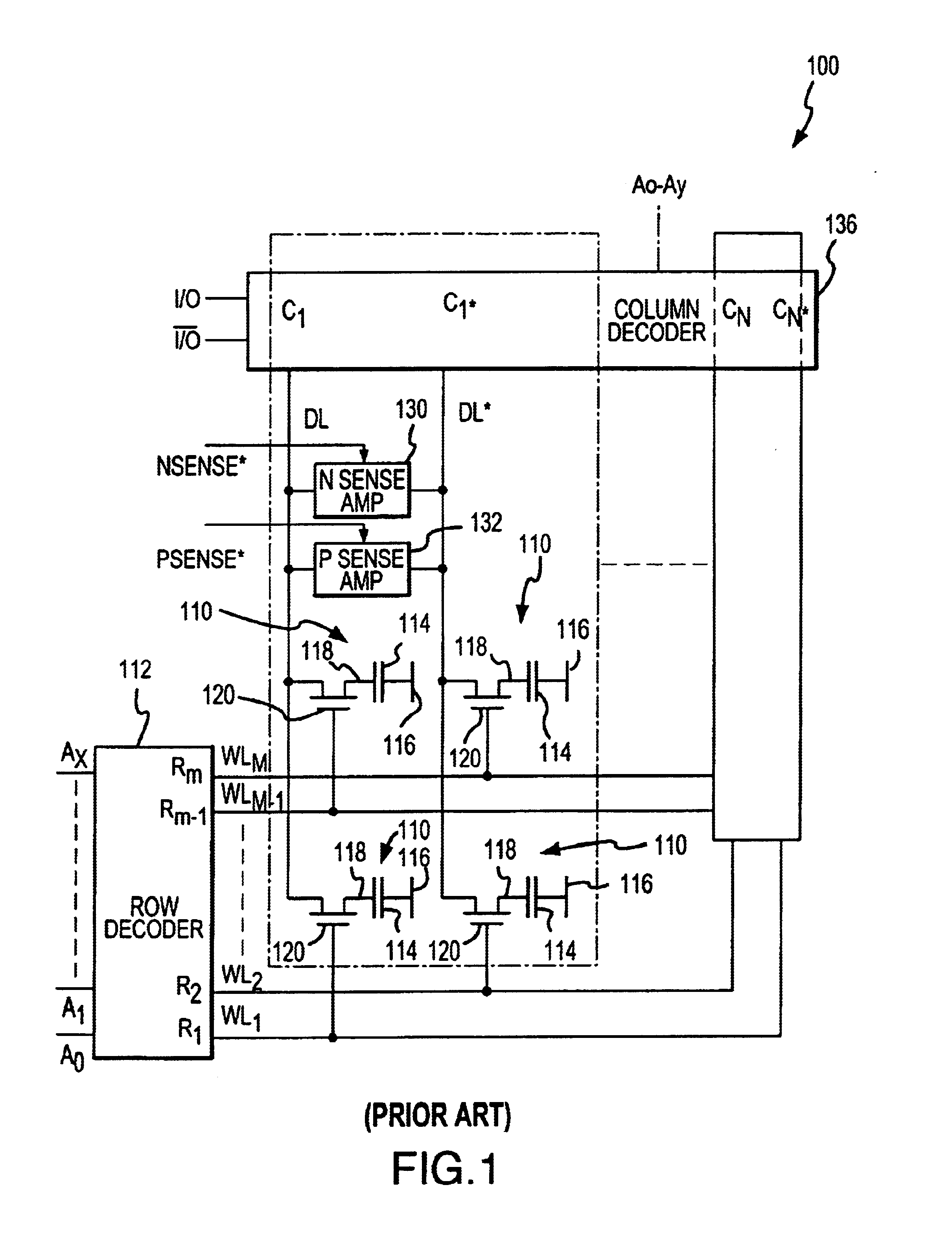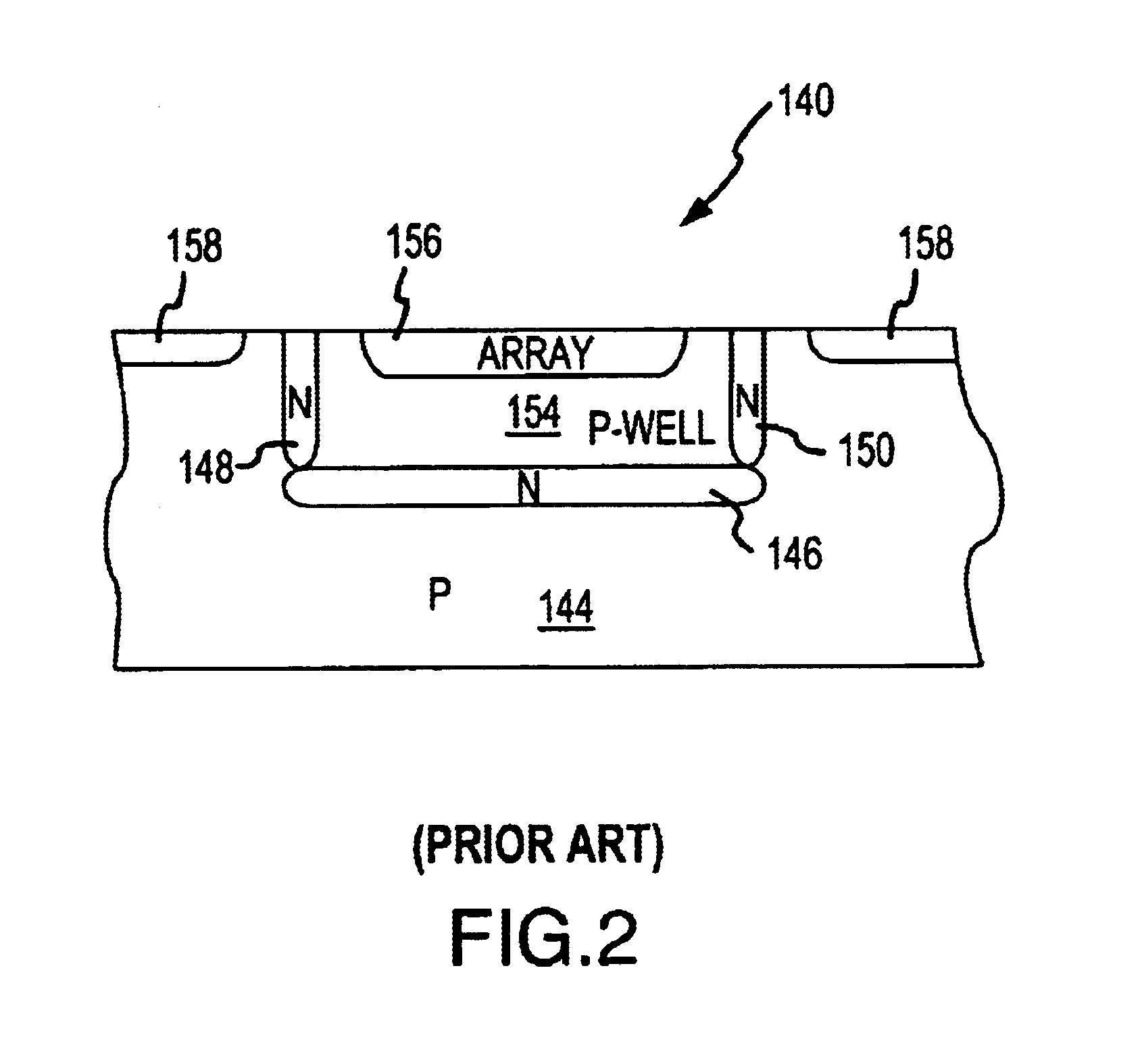Method and circuit for reducing DRAM refresh power by reducing access transistor sub threshold leakage
a technology of access transistor and refresh power, which is applied in the direction of information storage, static storage, digital storage, etc., can solve the problems of increasing the power consumption of memory devices with both the capacity and the operating speed of memory devices, and affecting the length of time they can be used, so as to reduce the required refresh rate of dram and achieve good positive voltage regulation. , the effect of reducing the required refresh ra
- Summary
- Abstract
- Description
- Claims
- Application Information
AI Technical Summary
Benefits of technology
Problems solved by technology
Method used
Image
Examples
Embodiment Construction
[0029]A portion of a memory array 160 according to one example of the invention is shown in FIG. 3. The memory array 160 is identical to the memory array 100 shown in FIG. 1, except for differences that will be discussed below. Therefore, in the interest of clarity and brevity, identical components have been provided with the same reference designations, and an explanation of their structure and operation will not be repeated. The memory array 160 differs from the memory array 100 by including a bipolar transistor voltage regulator 170 to provide a small positive voltage VOUT to power the n-sense amplifiers 130 responsive to receiving the NSENSE* signal that is normally applied directly to the n-sense amplifiers. As a result, as previously explained, the n-sense amplifiers 130 drive the digit lines DL to a small positive voltage, rather than zero volts, to decrease the sub threshold leakage currents of the access transistors for the inactive rows. In one example of the invention, th...
PUM
 Login to View More
Login to View More Abstract
Description
Claims
Application Information
 Login to View More
Login to View More - R&D
- Intellectual Property
- Life Sciences
- Materials
- Tech Scout
- Unparalleled Data Quality
- Higher Quality Content
- 60% Fewer Hallucinations
Browse by: Latest US Patents, China's latest patents, Technical Efficacy Thesaurus, Application Domain, Technology Topic, Popular Technical Reports.
© 2025 PatSnap. All rights reserved.Legal|Privacy policy|Modern Slavery Act Transparency Statement|Sitemap|About US| Contact US: help@patsnap.com



